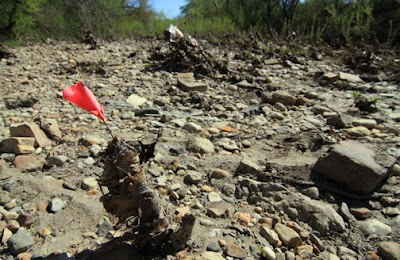Tension mounted among committee members as the evening grew late. Serious questions were raised about the specifics of UWM’s plans for its Innovation Park developments on the Milwaukee County Grounds. Most came from newly elected aldermen Organ and Jay. How did UWM come up with the figure of 200,000 sq. ft. of residential development and was market research done to justify such a large amount? How would contractors be prevented from “inadvertently” damaging the root systems of trees universally acknowledged to be crucial to the health of Monarch butterfly habitats protected by the plan?
While the meeting remained calm, impatience and frustration simmered. Freshman aldermen, sworn into office just last week, make up a neat half of the 8-member Committee on Community Development. All four seemed troubled by the need to make what felt like momentous decisions without adequate preparation.
Nancy Welch, Director of Community Development, unwittingly provided a prelude to these late evening exchanges during her opening orientation of the new committee members. She explained that, for the sake of brevity, the information packet that each member receives to prepare for the meetings often contains condensed versions of complex proposals such as those for the County Grounds. Understandable. She wisely observed that fully understanding the complexity of the issues would require reading 30 to 50 pages. I agree and I believe the new members were put in a difficult position, having to make spur of the moment decisions in the absence of this important background.
It wasn’t their fault. It was an unfortunate coincidence that these deliberations, which are so important to so many in this city, spanned a period during which a large transition of aldermen occurred. The solution should have been to table the decision so that new members could read the 50 pages. The hesitation on the faces of the committee members was obvious to the many constituents who came to watch the proceedings, but who were prevented from speaking.
City Attorney Alan Kesner guided the committee to a compromise amendment that enabled them to pass UWM’s plan with stipulations. The main sticking point was the proposed 200,000 sq. ft. of residential development that would surround the historic Eschweiler Buildings. For some committee members this seemed like too much to concede without concrete justification. Understandable. The representatives of UWM and its consultant HGA Architects were very patient with the proceedings and cooperative whenever questions arose. The height restrictions, they said, had been self-imposed for “purely aesthetic” reasons out of concern for the Eschweiler complex and they were willing to consider other options. More troubling for the committee was the informal nature of the deliberations that resulted in the 200,000 sq. ft. figure. The compromise amendment establishes that figure as a maximum with the stipulation that actual, specific design proposals must attempt to reduce the square footage (not just the footprint) and provide market research to justify the economic need for the final figure. I personally think they should be more concerned about the overall footprint, which has grown with each “compromise.” Let’s hold development at 850,000 sq. ft. or less.
Unfortunately, in my opinion, the amendment also included a well-meaning, but ill-advised lifting of height restrictions, which had been limited to below the Eschweiler buildings. Being able to build higher provides a developer with the flexibility to maintain square footage while reducing the size of the footprint. But any gains made by doing this to maintain scenic views of the historic buildings would be more than offset by two significant losses. Taller buildings create more violent wind patterns that would disrupt the butterflies’ ability to roost at the adjacent protected sites. Also the Eschweiler Buildings are far from the only scenic concerns. Well designed architecture can solve that problem in any case. What are far more valuable as scenery are the views of downtown Milwaukee visible from the hilltops and the wide expanse of the land itself, with its rolling prairie character. Tall buildings would destroy that character.
UWM has consistently expressed a willingness to comply with the wishes of the public on most issues and wisely chose self-imposed height restrictions that respect the low profile needed to maintain these assets. At last week’s public hearing the Common Council’s constituents turned out in force to express their desire to see this land preserved as open green space, while no constituents spoke in favor of development. The committee room was likewise packed, even though the public could not speak. The committee members’ instincts were good. Caution is required. Let’s proceed with due caution and consultation.
View of County Parks building from proposed Innovation Park













